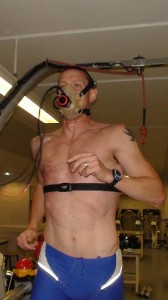If you spend enough time training for anything and start to read articles, message boards, and blogs that discuss your specific exercise be it running, biking, spinning, or swimming you are bound to come across a discussion about lactate threshold. It’s likely you will see this phrase used in conjunction with topics of heart rate training, VO2 max, aerobic and anaerobic metabolism, and perhaps even endurance zones. Unless you have a degree in sports or fitness or are a trained trainer, these words probably read like a foreign language and feel overwhelming.
At least that’s how I felt.
What better way to eliminate that stressed feeling of not understanding all this new training lingo than to learn as much as possible about it? There are endless resources on the topic of lactate threshold but before we get into how it relates to training, some basic definitions would be helpful to outline.
Learning the Language
The lactate threshold is a point during exhaustive, maximum heart rate exercise at which lactic acid builds up in the blood stream faster than the body can remove it.
Lactic acid contains an important fuel source for high-intensity running and breaks down glucose without the need for oxygen. The goal in training is to delay the onset of lactic acid accumulation, improve our body’s capacity to use it for fuel, and increase the intensity at which we can perform before “hitting the wall.”
Training aerobically means you are training at a moderate level and building a base. Aerobic training is slow, deliberate, and allows you to establish a pace at which you can run (or bike or swim) consistently for long periods of time.
Once you have established an aerobic base, which could take up to three months if you’re just starting out, you can start to push yourself to anaerobic metabolism. You will know you’ve reached this state during a work-out when you feel a burning in the muscles, are breathing faster, and might even feel as though you can’t go much longer. It is a high intensity level of exercise during which you want to reach around 80% maximum heart rate, or the stage at which you could not carry on a conversation.
VO2 max is an indicator of your natural abilities and potential as an athlete and indicates the maximal rate at which oxygen can be used by the body during maximal work. Though it is not difficult to calculate your VO2 max, Polar USA suggests it’s more practical to simply monitor your heart rate as a measure of performance.
Tying It All Together
I truly first experienced what it meant to push to my lactate threshold in spin class. I found it was very easy to gauge when I was moving beyond a base aerobic level into the high intensity anaerobic level and I could definitely feel the burn in my muscles. Sometimes we reached anaerobic with intense and repeated sprints and sometimes using a heavy gear powering through hills. Once we reached the most intense level (which is different for everyone) we were only there for a short time and then went to a recovery move.
The light bulb that went off for me was that each time I could sprint a little faster or use a slightly heavier gear before I felt I had reached my max which indicates I was increasing my lactate threshold. It took me a while but I finally realized that I needed to try to replicate the diversity of a spinning class in my running routines. Just as in an hour of spinning we would sprint, climb, ride at a moderate or easy pace I needed to experience those varying levels of intensity in running in order to improve.
By integrating sprints, harder and more hills, and fartleks into my runs I have found that I can push a little harder at each hill or run a little faster each time I sprint. I have increased, and will continue to increase my lactate threshold.
There are certainly ways to measure your VO2 max and lactate threshold but it is definitely possible to train without knowing your exact numbers. It is helpful to have a heart rate monitor as it allows you to compare one work-out with the next. But the most important aspect to understanding your own lactate threshold is to pay attention to your body. Notice your breathing, your pace, how your muscles feel. As you increase and add to your training plan with a variety of aerobic and anaerobic work-outs, you will feel yourself increasing your lactate threshold.
And on race day, your body will thank you.



Pingback: Sorting Out Strides | Health and Running